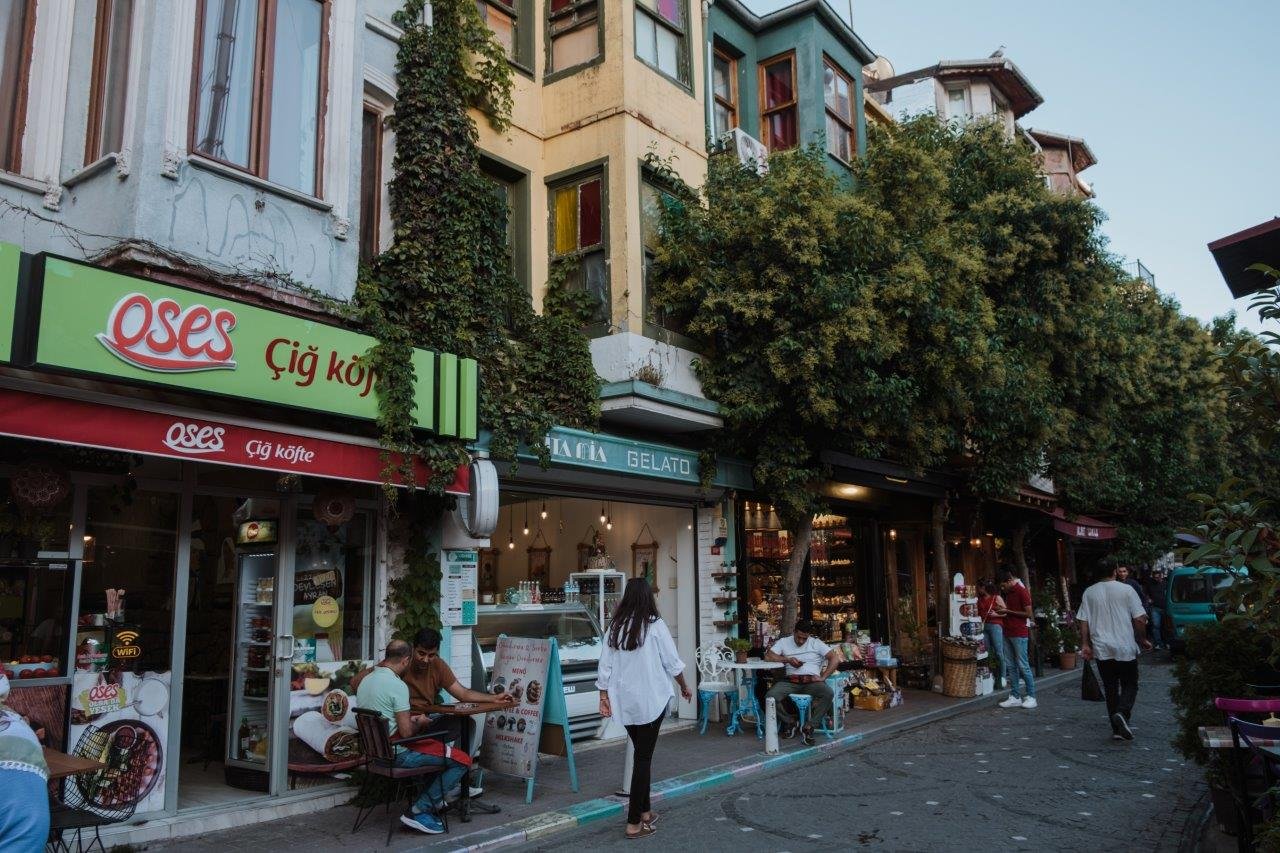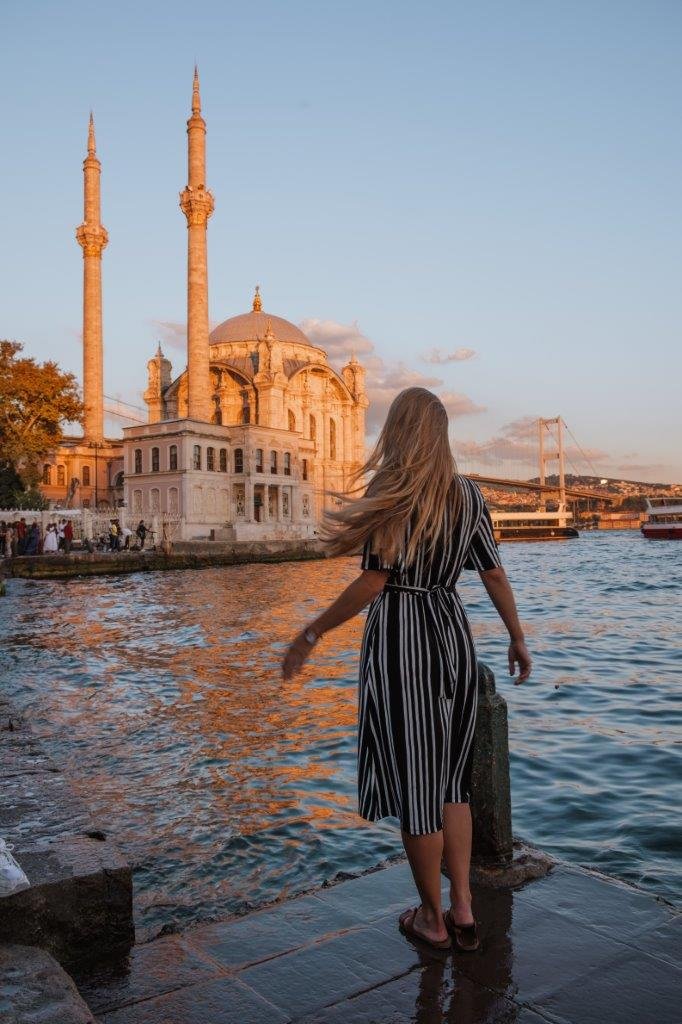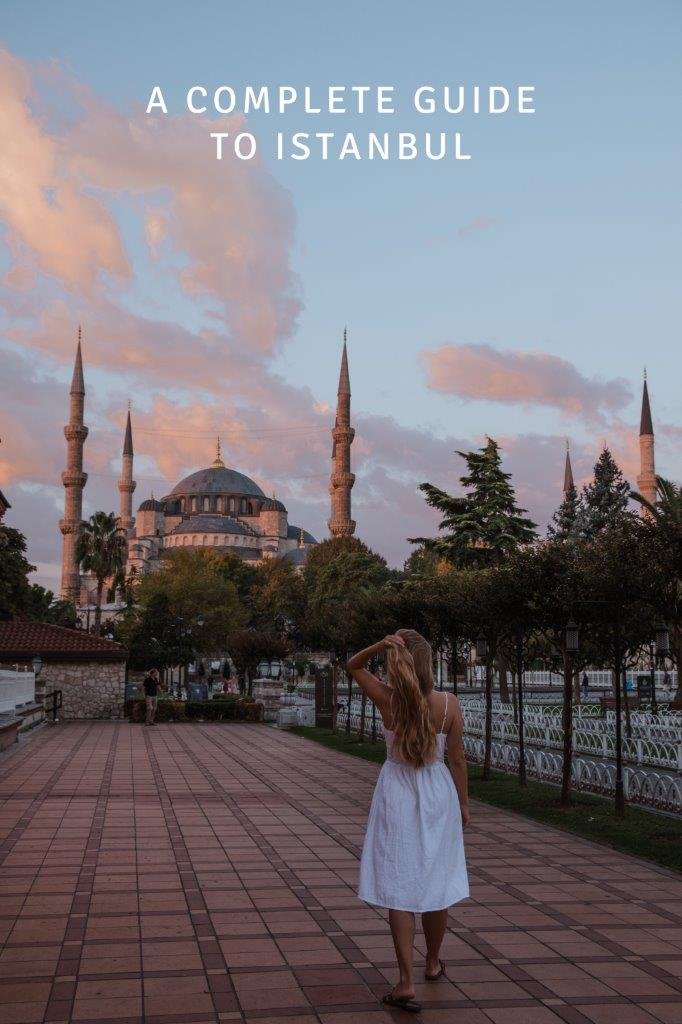
I spent five weeks based in Istanbul, Türkiye, the cosmopolitan and bustling capital city that famously stretches across two continents, the only one in the world to do so. With the western half of the city still in Europe, and across the river, the eastern side in Asia, this city is unique. However, in many facets of the ctiy I have found similarities of my other travels - interestingly, the market-style of shopping reminds of Quito in Ecuador, while the daily calls to prayer remind me of Indonesia and being woken at all hours, and further still, being along the river echoes Porto in Portugal where life happens along the shores of the River Douro. Perhaps it is the combination of these many different cultures and continents seemingly being flung together in Istanbul that make it so unique. One thing is for certain: I've never been anywhere quite like it.
With this guide I've tried to summarise how I spent my month; a mixture of feeling overwhelmed by the sheer vastness of Istanbul and the chaotic streets you need to navigate in order to get around, in combination with the discovery of peaceful little corners where you can sit and watch the world go by. No guide to Istanbul could ever do it justice; even though I consider Türkiye to be in Asia given that most of its land sits on the Asian continent, technically Istanbul is the largest city in Europe, beating out Moscow by a few million people. There's no way one guide can capture the entirety of Istanbul's essence in one post, but at least this is my take on a month here.
How to Get to Istanbul
Istanbul is one of the world's hubs; flights arrive here from nearly all around the world, with Turkish Airlines serving the most international destinations of any airline worldwide. That's quite the feat, covering even smaller airports that many other international airlines don't even serve (like Salzburg!). I was actually able to fly direct from Salzburg to Istanbul.
In addition to Turkish Arlines, which itself offers flights to 315 global destinations, more than 60 other airlines fly to IST Airport. In other words, it's big.
There are two major airports in Istanbul: IST on the European side and SAW on the Asian side. IST is about a 45-60 minute taxi ride outside of Fatih, the main tourist hub of Istanbul. Flights might be cheaper to SAW, however you have to factor in a longer ride into the city and traffic in Istanbul is notoriously horrible. If you arrive at peak time, you might be sitting in traffic for a long time. I landed around 10:30pm and thankfully the streets had quietened down by then, but most evenings when I walked around, the traffic was at a standtill. IST Airport into Fatih costs approximately 300 lira; the orange taxis are cheaper than the black ones and are metred.
Where to Stay in Istanbul
In Europe's largest city, you're bound to find accommodation of any kind to suit your budget and location. I suggest staying on the European side in the Fatih neighbourhood if you want to be close to most of the tourist attractions on Istanbul so that you can stick to getting around on foot during your stay. There are also nice options across the river in Karaköy.
I stayed at a hostel during my time in Istanbul, the Second Home Hostel. The location of Second Home was a winning factor, being just a ten-minute walk from the Hagia Sophia and Blue Mosque in one direction and ten minutes from the waterfront and ferry terminals in the other. The staff are so welcoming and kind and the roof terrace and the community vibe really made this a wonderful place to be based from, providing a sense of security, belonging and happiness in this choatic city.
Vegan Food in Istanbul
I've compiled a whole separate blog post on finding delicious vegan food options in Istanbul. There aren't a ton of options right in Fatih, but there's a few very hipster neighbourhoods absolutely teeming with vegan options, particularly Balat, Karaköy and Kadıköy.
Things to Do in Istanbul
As I said earlier, the list is neverending! Here is what I discovered during my month of living and working remotely from Istanbul.
I also went out dancing a few nights and my best reccommendations for places to dance in Istanbul include Back Street Taksim and Kastel. The Taksim area is the place to be on a Friday or Saturday night!
Visit the Hagia Sophia
Perhaps one of the most well-known attractions in the entire city is the Hagia Sophia, an icon on the horizon line in the heart of the Fatih neighbourhood. Originally built by Roman emperor Justinian I as the Christian cathedral of Constantinople between 532 and 537 and, at the time of its construction, it was the largest interior space in the world and the world's largest cathedral until Seville Cathedral was completed in 1520. It was converted to a mosque in 1453 after the fall of Constantinople and underwent physical changes to reflect this. The mosque closed in 1931 and was reopened in 1935 as a museum and is now one of the country's most visited tourist attractions. In 2020, the Council of State decided it was no longer a museum but once again a mosque as it was the personal property of the Sultan Mehmed, a decision which was condemned by many, including UNESCO and international leaders.
The Hagia Sophia is free to visit; come early to avoid the long lineups.





Watch the sunrise over the mosques from Sultan Ahmet Park
This park lies between the Hagia Sophia and the Blue Mosque. By day it's a bustling square, with tourists packed into every spot trying to get beautiful angles of the mosques behind the fountains and tree-lined paths that adorn the park. If you come for sunrise though, you'll find a quiet calmness as you witness the first light rising over the mosques iconic domes.
The nearby Seven Hills Restaurant is renowned for its terrace offering arguably the best views of the mosques.




View from Seven Hills
Visit the Blue Mosque
While the interiors of this mosque were the least impressive to me, perhaps because much of it was under construction and with the crowds of people it was hard to enjoy the space, however the exteriors of this mosque are stunning. Officially also known as the Sultan Ahmed Mosque, the Ottoman-era mosque was built from 1609-1616 by Ahmed I, who lies in permanent rest here. The mosque, true to its name, is covered in blue tiles and is lit up in blue lighting in the evenings.



Get lost in the Grand Bazaar
The Grand Bazaar, operating since 1461, is one of the largest and oldest covered markets in the world. I quite literally did get lost in here, even trying to follow Google Maps out - the 61 streest and over 4000 shops are spread across 30,7000 square metres offering every Turkish good imaginable, from Turkish delights, sweets and spices to leather goods, Turkish lamps, rugs and tea sets. If you're after a souvenir or two to remind you of your trip home, this is the place to come, but be prepared to say no to a lot of people as the sellers are very prominent in trying to sell you their wares.




Visit the incredible Süleymaniye Mosque
Of all the mosques I visited in Istanbul, this one was my favourite. Set a little bit further out of the main touristy part of Fatih, fewer people visit here making it a relatively calm and peaceful place to visit. The interiors are also much bigger than the Blue Mosque, so you can visit without feeling like you're stepping on toes, and can enjoy the sweeping domes. Commissioned by Suleiman the Magnificent, the mosque was opened in 1557 and was the largest in Istanbul until 2019. This mosque is also the one best seen from the Golden Horn inlet, sitting prominently on Third Hill. I suggest walking across the Golden Horn Bridge and Galata Bridge in the evening to watch the sunset and twilight over this beautiful view.






Go for a walk along the Golden Horn
The İbb Haliç Nedim Parkı walkway stretches along the Golden Horn inlet, a popular little riverfront park with fishermen and people lazing about on the grass, particularly in the evenings when its cooler and the sky begins to fade into the colours of sunset.

Watch the sunset over the city from Golden Horn Bridge
There are a few bridges that cross the Golden Horn Inlet, all offering beautiful panoramic views across the city and the mosques that adorn the skyline. It was one of my favourite ways to spend an evening, just watching the light change from up here.






Watch the sunset over the city from Galata Bridge
Another of the bridges which crosses the Golden Horn Inlet, Galata Bridge is famous for being filled with fishermen, all throwing their lines over the side into the inlet below. The view from this bridge might be one of the best in the entire city.






Explore the colourful neighbourhood of Balat
One of the most popular neighbourhoods in Istanbul is the colourful one of Balat. It's about a 45-minute walk outside of Fatih, but well worth the stroll; I walked there through town and then back along the İbb Haliç Nedim Parkı at golden hour. Balat itself is a delightful spot, with brightly coloured buildings adorning the streets that are home to cute cafes, antique shops, boutiques and a few really delightful vegan spots, too.




Take a ferry to the Asian side of Istanbul
Ferries are the most popular way - for both tourists and locals alike - to get between the two continental sides of Istanbul, as well as up and down the coast. Being on the river makes the waterway the most popular and fastest way to get around. Ferries run every fifteen minutes between Eminönü (Turyol) on the European side across the river to Kadıköy on the Asian side and cost just 15 lira each way for a beautiful ride across the Bosphorous. Try and aim your return trip as the sun is setting and you'll be greeted with beautiful golden hour light across the horizon.




Wander through the fragrant halls of the Egyptian Bazaar
Mısır Çarşısı, buitl in 1664, is a bustling spice and sweets market near the riverfront in Fatih. It's vibrant, colourful, fragrant and busy. The second most famous bazaar in Istanbul after the Grand Bazaar, this is the place to get spices, Turkish delights, sweets, caviar, dried nuts and much more.

Go underground at the Basilica Cistern
Near the Hagia Sophia a subterranean cistern - the largest in the city - can be found dating back to the 6th century. 7000 slaves were involved in the construction of this massive underground structure which demonstrates exquisite architectural skill and design, which is perhaps the most mindblowing feature of the entire thing, given that zero machines were involved. The cistern provided water filtration to the Great Palace of Constantinople and Topkapi Palace well into the 1400s.
Today, there is just a little water left to demonstrate how vast it once was and is 200 lira per person to visit. If I had to skip anything on this list, it would be this because, while it was very interesting to visit, it's pricey for what you get.



Explore the exquisite Dolmabahçe Palace
This was a wonderful way to spend a few hours exploring one of the prettiest buildings in Istanbul, peeking into how life as a wealthy Sultan with his many wives and mistresses (and children!) may have looked during the Ottoman Empire from the 1800s to the 1900s. Dolmabahçe Palace was built from 1843 because the Empire's 31st Sultan, Abdülmecid I, felt that the current residence at Topkapi Palace was not luxurious enough compared to the European palaces. Six Sultans called Dolmabahçe Palace betwen 1856 and 1924, ending with Caliph Abdülmecid Efendi at which point it became the property of the national heritage of the Turkish Republic. Wandering through the many halls and rooms of this palace - which currently costs 300 lira per person - is a step into the past. The interior decor is opulent and definitely now rivals other incredible other royal residences I've visited.








Spot the Ortaköy Mosque on the Bosphorous
A bit further out of the main city, up along the Bosphorous in the neighbourhood of Ortaköy (where you can also buy the city's best kumpir or stuffed Turkish potatoes). Situated right on the river, it's a very popular sunset viewing spot as the golden light bounces off the water and the tall walls of the mosque. The mosque was commissioned by the Ottoman sultan Abdülmecid I, completed in 1856. You can get here by tram and then a walk along the river; it's also visible from any Bosphorous cruise as it's right next to the famous 15th of July Martyrs Bridge.



Find the Galata Tower
The Galata neighbourhood was one of my favourites for discovering cute cafes, yummy restaurants and loads of little shops and sweet streets. In the heart of it all is the iconic Galata Tower, visible from afar. Built in 1348 and originally used as a watchtower and the tallest building in the city at the time of its construction, the tower has also been a prison and fire watch tower, now a restored museum home to 360-degree views over Istanbul from the viewing platform if you're willing to wait in the queue.


Watch the sunset from a ferry
Something about the ferries of Istanbul, a popular form of transport between the neighbourhoods of both the European and Asian sides for tourists and locals alike, is just so calming and relaxing. A mini escape from the hustle and bustle of the streets as you ride one of the many ferries up and down the Bosphorous - time it with sunset for incredible views of the Istanbul skyline.


Take a Bosphorous Cruise
One of the most popular activities in Istanbul is to spend a few hours cruising up and down the Bosphorous taking in all the sights of the European and Asian sides of Istanbul. Prices range from more expensive including dinner and drinks, to just 5 euros for a 2-hour trip (that's the one we did with Sea Land Trip). Along the way, you'll see the famous icons of the skyline including the many mosques, towers, buildings and bridges that cluster along the riverfront. It was quite stormy and windy when we went but we enjoyed it all the same.





DAY TRIPS FROM ISTANBUL
CHECK OUT MY VLOG OF ISTANBUL HERE!
PIN THIS POST TO REFER BACK TO LATER!


Hi! I’m Jana, a Dutch-German-British-Canadian with a dream of seeing every country in the world. I am a storyteller, photographer and adventurer passionate about documenting and sharing my travels.


